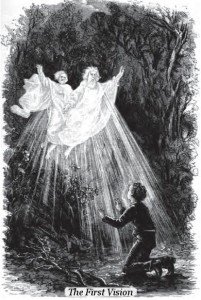Related Posts: Mormons and the Bible: King James Version and the JST; Mormons and the Bible: Reuben Clark’s 16 Points
The traditional Protestant Bible consists of 66 books: 39 in the Old Testament (OT) and 27 in the New Testament (NT). The Greek word for testament is “diatheke…[which] in classical Greek [means] an arrangement, and therefore sometimes a will or testament, as in an arrangement for disposal of a person’s property after his death.” (“Bible”, LDS Bible dictionary). Diatheke corresponds to an OT word meaning covenant.

The LDS’ attitude toward the Bible is stated in our Articles of Faith: “We believe the Bible to be the word of God as far as it is translated correctly” (Articles of Faith 1:8). The LDS cannon is referred to as the Standard Works which consists of the Bible, the Book of Mormon, the Doctrine and Covenants, and the Pearl of Great Price.
[color-box]FYI: when these books are bound into a single volume it is referred to as a quad.[/color-box] Continue reading “Mormons and the Bible: Missing Scripture and Inerrancy”

